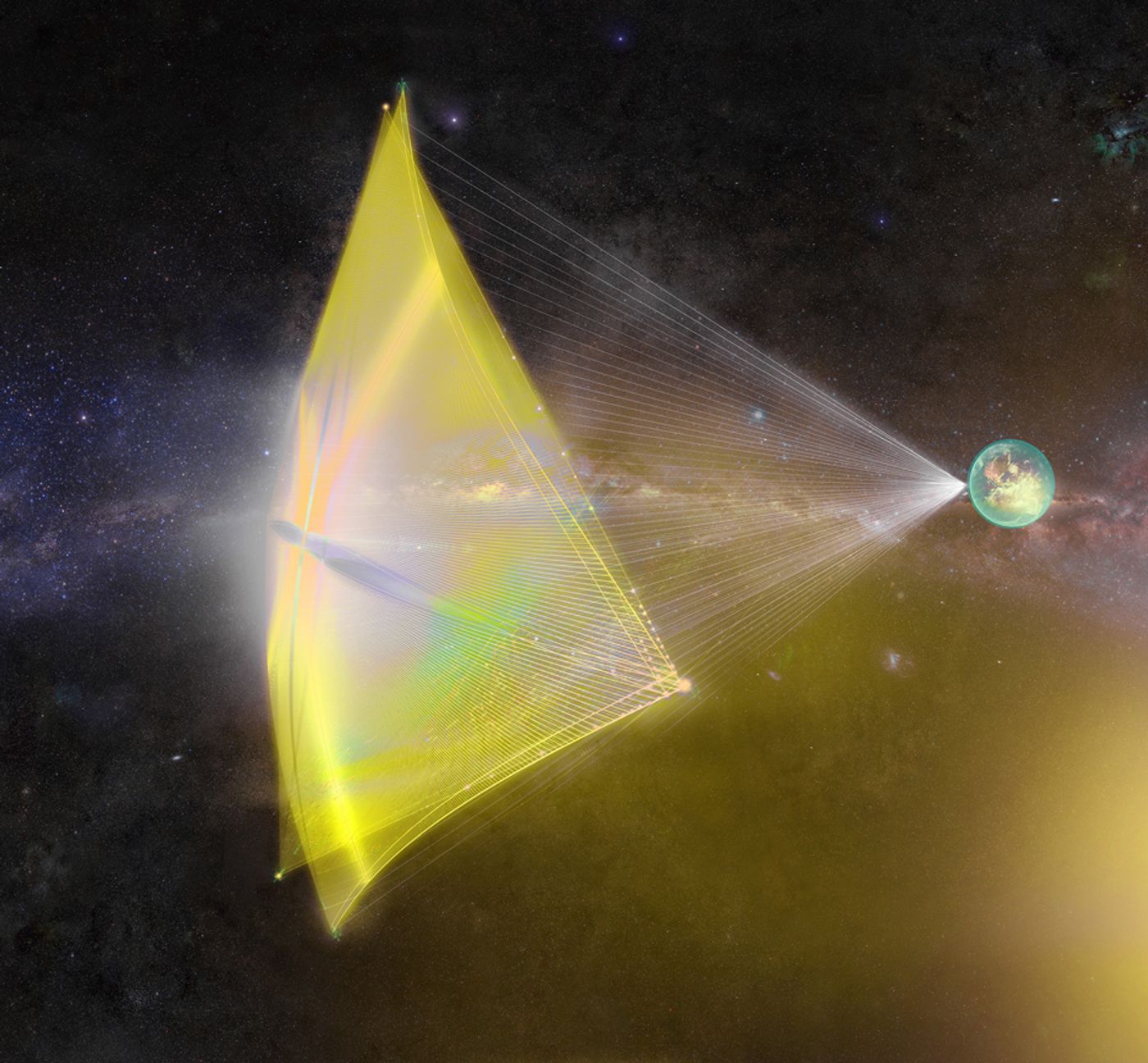Remember Those Breakthrough Initiatives for Exploring Proxima Centauri?
You probably remember the Breakthrough Starshot initiative, which was proposed by billionaire Yuri Milner and astrophysicist Stephen Hawking months ago, an initiated that was supposed to be the first ever attempt to send spacecraft to another star system around 4.6 light years away from Earth.
Image Credit: Breakthrough
At this distance, it would take forever to send a full-sized spacecraft like New Horizons there, but Breakthrough Starshot aims to do it in the near future by sending microspacecraft there at 20% of the speed of light by utilizing the power of lasers and laser sails.
While it was just a concept at that point in time, a new agreement with the European Southern Observatory (ESO) could help greatly in bringing this dicey concept to life by the year 2030. Then, following a launch, it would take an additional two decades to arrive there. That said, the entite mission could hopefully be conducted and concluded during the current generation of mankind.
The only target we have right now is Proxima b, a dim little exoplanet much like Earth that’s orbiting its host star Proxima Centauri, which is the third and dimmest star of the Alpha Centauri system that the mission has its sighted dialed in to. Of course, we want to find more than one target, that way we have more than one exoplanet to study and we can learn as much as possible from a single mission.
The agreement with the ESO would upgrade the Very Large Telescope (VLT) Imager found in Chile, making it more effective at spotting exoplanets in the region, or special targets that we can aim for. This will make looking for exoplanet targets for Breakthrough Starshot much easier, and the observations are expected to begin around 2019.
There is undoubtedly a lot of work to be done, as nothing like this has ever been achieved before. This will be the fastest-traveling spacecraft ever made by mankind, despite the fact that they’re still micro-sized. They’ll also be able to observe these distant bodies and send back information, despite how far away they would be.
Because there’s a high risk of many of these fast-traveling micro spacecraft being obliterated by space dust and space rocks, many of them are going to be sent, rather than just one. In fact, a whole array will be launched into space via a special enclosing capsule, and then a powerful laser beam from the Earth will be fired at them to activate their laser sails and get them going.
You can see how this wonderful technology works in Milner's presentation below:
While something like this has never been done before, it should be very interesting to see if it yields spectacular results or not. For the time being, however, we’ll have to just rely on the large clunky spacecraft that can only get as far as our own Solar System; a major boundary that we have trouble surpassing because of its vast size and the time required to reach its outer edges.
Source: ESO









